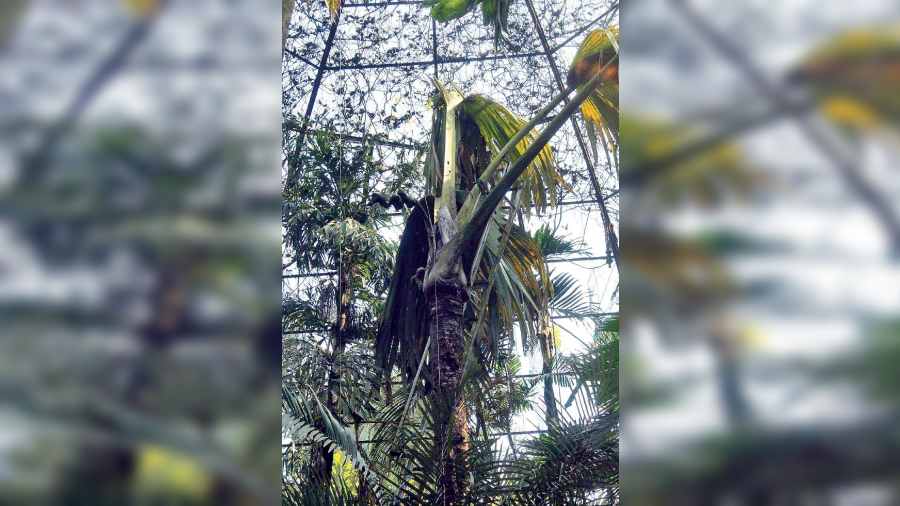The Double Coconut Tree (Lodoicea Maldivica) at the Indian Botanic Garden, which underwent a cross-country pollination in 2013 appears to be dying. Though garden authorities are hopeful that the tree will survive but yellowing leaves and the general appearance of the tree seem to suggest otherwise.
Besides, the seed borne out of the cross-pollination has not germinated, which means that the rare species will soon be extinct in the country.
Scientists of the garden said the plant had had a fungal attack and tried to treat it with fungicide.
“Unfortunately, the crown of the tree suffered a fungal attack two to three years ago. This took a heavy toll on its health. As it is a coconut tree and has only one trunk, growth has almost stopped. The seed that had been harvested has also not germinated,” said Ashiho Asosii Mao, the director of the Botanical Survey of India.
He is now trying to get a new plant from Seychelles Islands, the home of the Double Coconut Tree.
“I have written to the high commissioner of Seychelles Islands and he has also visited the garden. But nothing has come of it so far. I will take up the matter with the ministry,” he said.
Lodoicea Maldivica is the largest seed-bearing plant so far described in the plant kingdom. The fruits weigh about 50 pounds at maturity. The seed looks like two coconut seeds fused together, for which the name stands the ‘Double-Coconut’.
The species is indigenous to only two of the 115 Seychelles Islands. They have historically been found floating in the west Indian Ocean being known to the explorers long before the parent plants were discovered and later described from Maldive Islands. It is also called ‘Coco-de-Mer’ (coconut of the sea) for such nature and belief that the fruits from Seychelles Islands reached to the Maldives through sea, where it was germinated and later on described.
This giant palm survives about 1,000 years. The male and female plants are different (dioecious). It is a female plant that was introduced in India and planted only in AJC Bose Indian Botanic Garden in 1894.
A leaf takes about a year for full spread and maturity. A full-grown leaf at its greatest spread can be used to thatch a hut. The fruit takes nearly five to seven years to mature, remain dormant for 10 years and takes at least three years to germinate. Successful fruit setting had been achieved in this palm through artificial pollination by procuring pollen from Nong Nooch Tropical Garden, Thailand in 2013. Recently, in February, 2020, the first two mature fruits were harvested from this tree.
“When the tree was 94 years old, it produced flowers for the first time. When we came to know it was a female plant, we started searching for a male . The nearest male was traced in the Royal Botanic Garden of Sri Lanka. Pollen of the male flower was brought in to artificially pollinate the plant in 2006. But the efforts failed. In 2013, we tried again with pollen from another male from Thailand. This time it worked and the tree bore fruits,” said H.S. Debnath, former director of the garden.
